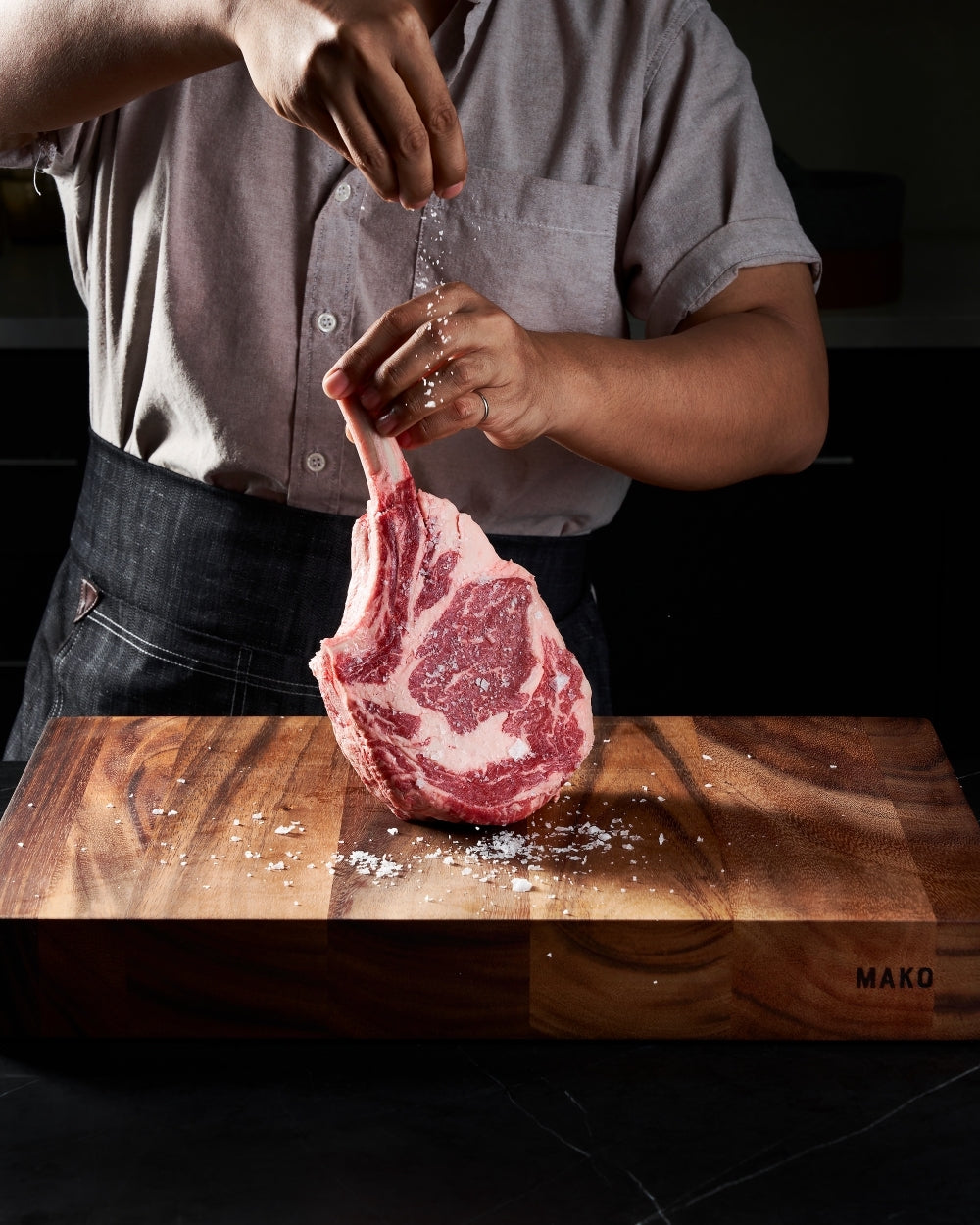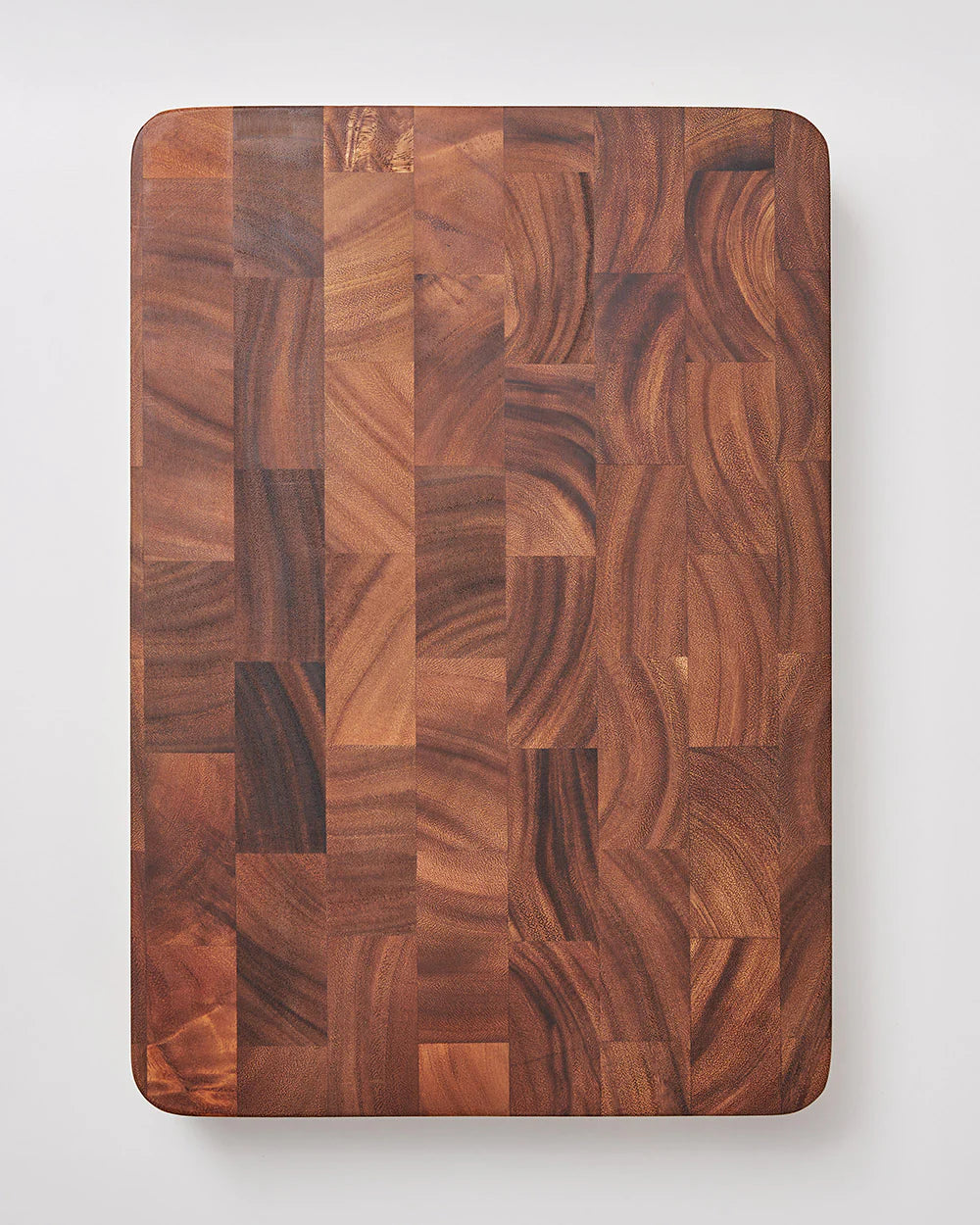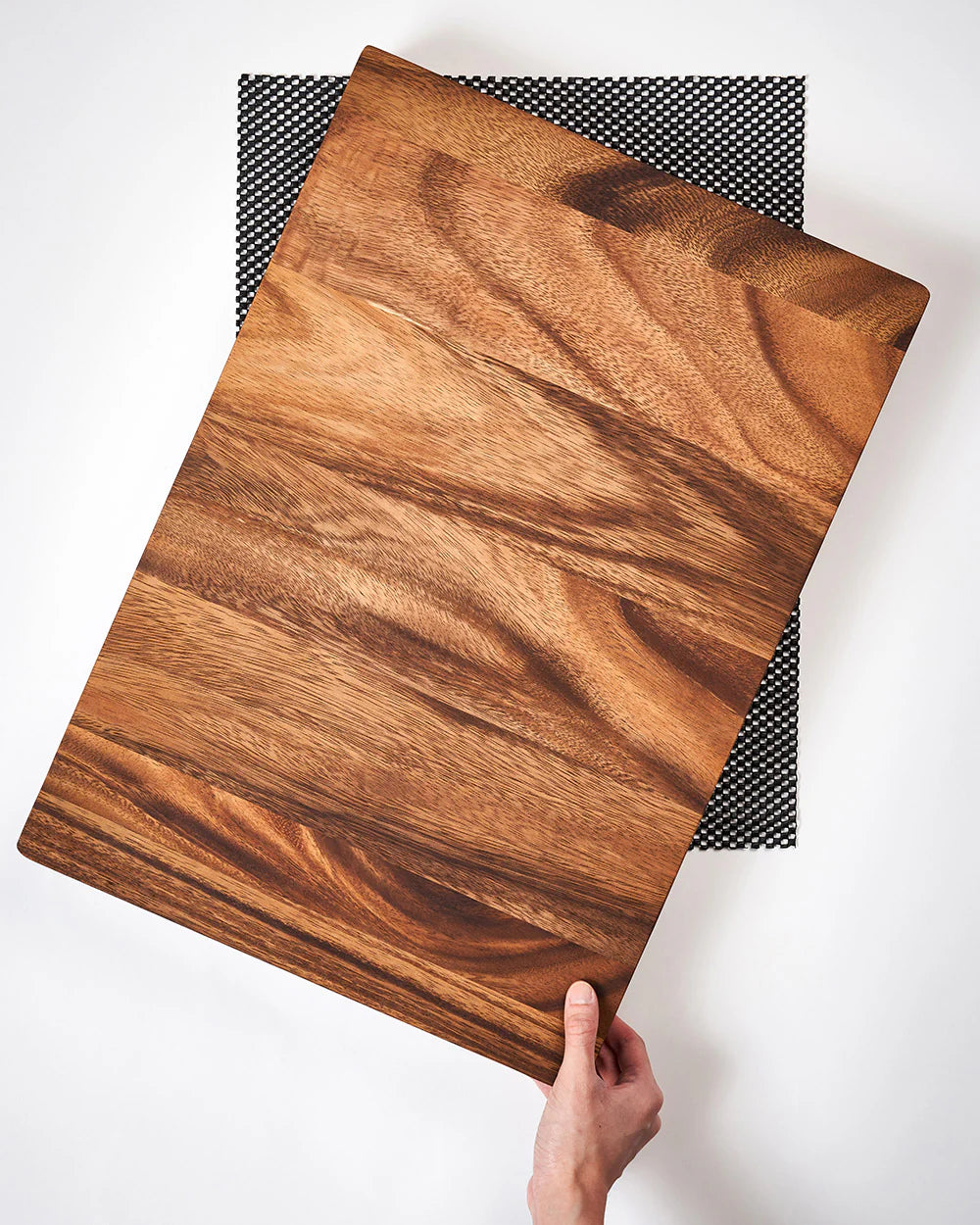
What actually is a butcher's block?
As the name suggests, butcher’s blocks, which are essentially very hefty cutting boards, originated in butcheries and places where meat is processed. They’ve been used for centuries and were originally just thick tree rounds, which were often too soft, would split, and weren’t particularly hygienic. As saws and other tools evolved, clean-cut slabs were used instead, with thick-cut hard wood preferred as it’s extremely durable. So durable in fact, that a good, heavy butcher’s block will practically last a lifetime.
Now popular with home cooks, today’s butcher’s blocks aren’t limited by the size of a tree log as they once were. They’re made by securing straight, evenly-cut strips of wood together to create particularly rugged boards, using either end grain or edge grain construction – good manufacturer’s choose premium-quality, tightly-grained pieces of heartwood. Maple cherry, walnut and acacia are all examples of heartwood. Because a quality butcher’s block is as beautiful as it is useful, it can be used to both prep food as well as display it, contributing to the overall allure.
But which one?
End grain vs edge grain
There are a few methods of making a butcher’s block, namely using end grain or edge grain construction.
What’s the difference? Is one better than the other? Not really, but each kind does have its nuanced characteristics.

END GRAIN
- End grain cutting boards are made from wood cut against the grain of the wood, so the wood fibres are exposed and run vertical to the top of the board.
- The surface has a striking checkerboard pattern and is particularly knife-friendly, with a resistance to deep cuts.
- End grain boards are gentler on knives because the knife cuts fall between the fibres, not against them.
- They’re self-healing, meaning the wood fibres close up after use; knife cuts and general surface wear are also less visible.
- End grain boards can be heavier than edge grain boards, meaning even greater stability on your bench.
- End grain boards do require a little more maintenance than edge grain, needing oiling more often. They can also be more expensive but this varies among manufacturers.

Edge grain
- Edge grain boards are made from wood cut along the grain of the wood, so the wood fibres run horizontally along the surface.
- The surface has an attractive, panelled appearance with wood grain running across.
- Highly durable, edge grain boards don’t need as much oiling and general maintenance as end grain boards.
- They’re also slightly more resistant to moisture and staining than end grain boards.
- The horizontal grain patterns on the board’s surface can be incredibly beautiful.
- Depending on the maker and type of wood, edge grain boards can be lighter than end grain boards.
- Edge grain boards can be a little less forgiving of knife marks than end grain, although these can easily be dealt with using the right food grade oils.
- Edge grain can dull your knives a bit more than end grain although it must be noted that plastic, glass or bamboo boards are much harder on your knives overall.
